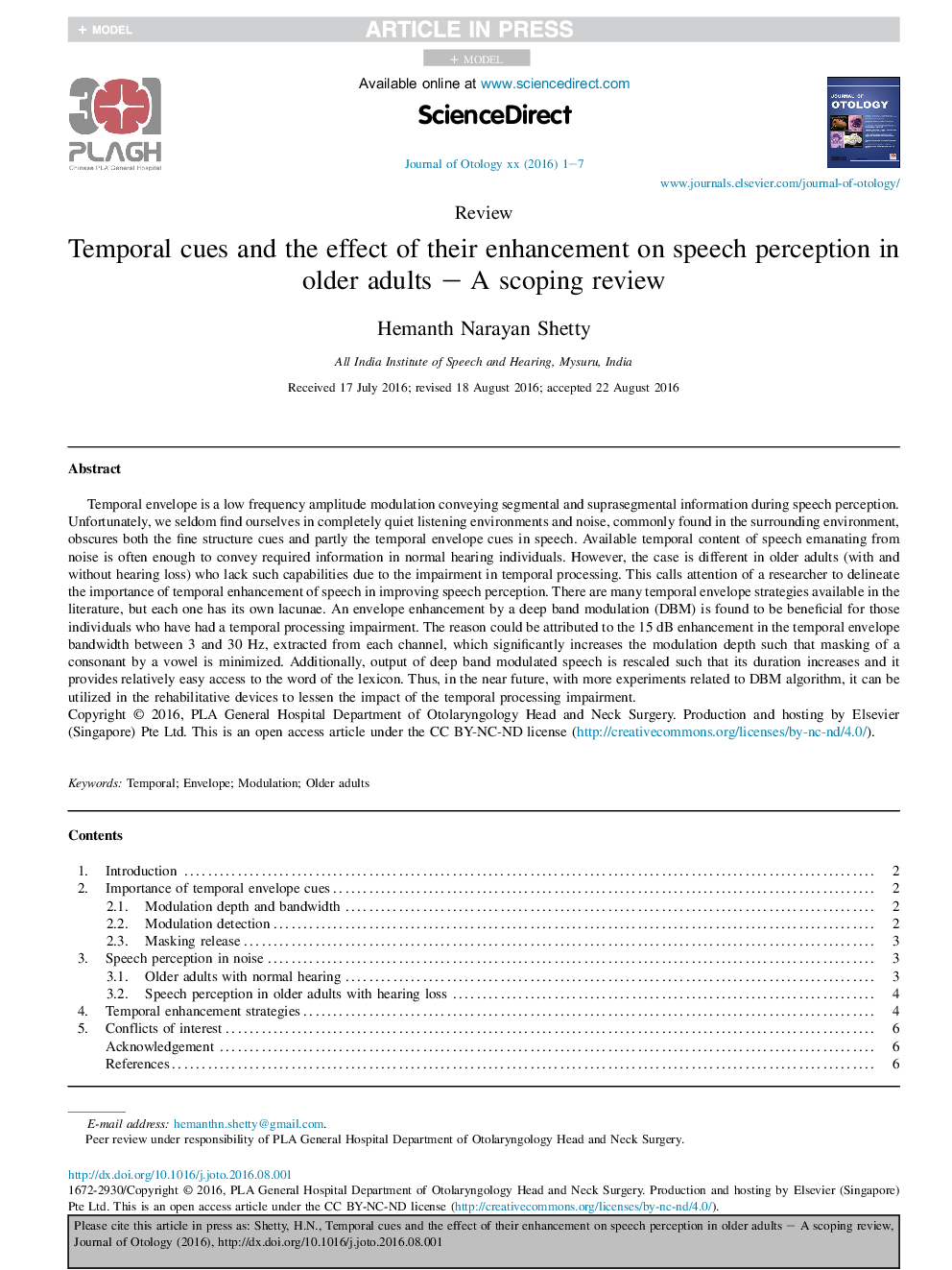| Article ID | Journal | Published Year | Pages | File Type |
|---|---|---|---|---|
| 5715015 | Journal of Otology | 2016 | 7 Pages |
Abstract
Temporal envelope is a low frequency amplitude modulation conveying segmental and suprasegmental information during speech perception. Unfortunately, we seldom find ourselves in completely quiet listening environments and noise, commonly found in the surrounding environment, obscures both the fine structure cues and partly the temporal envelope cues in speech. Available temporal content of speech emanating from noise is often enough to convey required information in normal hearing individuals. However, the case is different in older adults (with and without hearing loss) who lack such capabilities due to the impairment in temporal processing. This calls attention of a researcher to delineate the importance of temporal enhancement of speech in improving speech perception. There are many temporal envelope strategies available in the literature, but each one has its own lacunae. An envelope enhancement by a deep band modulation (DBM) is found to be beneficial for those individuals who have had a temporal processing impairment. The reason could be attributed to the 15 dB enhancement in the temporal envelope bandwidth between 3 and 30 Hz, extracted from each channel, which significantly increases the modulation depth such that masking of a consonant by a vowel is minimized. Additionally, output of deep band modulated speech is rescaled such that its duration increases and it provides relatively easy access to the word of the lexicon. Thus, in the near future, with more experiments related to DBM algorithm, it can be utilized in the rehabilitative devices to lessen the impact of the temporal processing impairment.
Related Topics
Life Sciences
Neuroscience
Cellular and Molecular Neuroscience
Authors
Hemanth Narayan Shetty,
